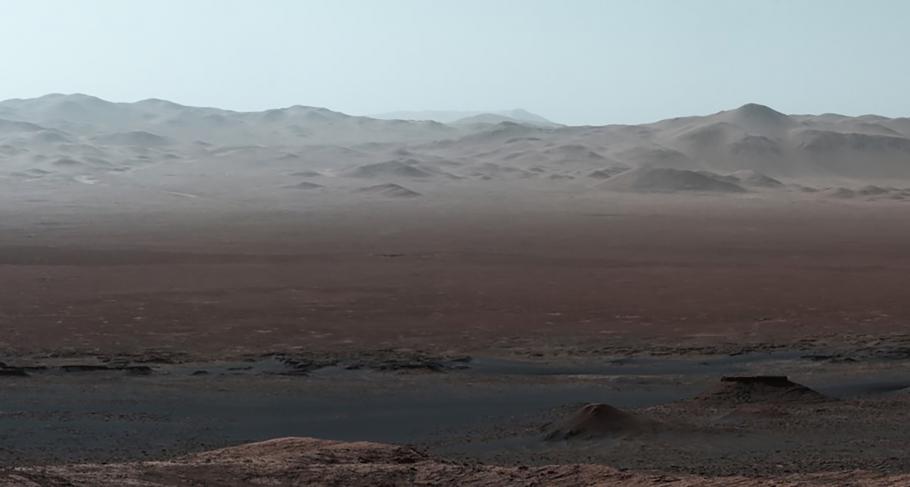Alluvial fans are semi-conical landforms that consist of sediment deposited by a stream where it emerges from an alcove in a rugged mountain front onto an adjacent, relatively flatter land. During infrequent, strong rain storms or snowmelt events, sediments deposited by streams gradually build up fan-shaped deposits. Alluvial fans on Earth and Mars are important because they contain clues about past climate conditions.
We’ve been studying alluvial fans across Mars, with an emphasis on fans within impact craters in Margaritifer Terra1,2 and Gale3,4 crater (Figs. 1 and 2). These fans preserve a range of small features, including relict channels that now stand in relief as a result of a few meters of erosion. The slopes and apparently susceptibility of much of the fan surfaces to wind erosion indicates they are dominated by fine-grained materials (gravel-sized and smaller).
Superposition relationships (what is on top of what) and the low densities of craters formed on the fans indicates that they were active fairly late in Mars history. Activity likely extended into the Amazonian era, or perhaps as recently as ~1-2 billion years ago. Although that means they are very old, especially by terrestrial standards, such late activity occurs well after most water-related activity occurred on Mars. Moreover, the wide occurrence of craters with such potentially “young” alluvial fans likely requires globally more clement climate than occurs today. Several clues, however, suggest that the late activity may not have been responsible for emplacement of the entire fans, but may have been associated with deposition of a relatively thin veneer of sediment capping the deposits. Although the source of water responsible for the late fan activity is not known with any certainty, groundwater sources can likely be ruled out. Perhaps the most likely source is related to melting of snowfall that accumulated in the source alcoves above the fans that also helped to physically weather and break down the rocks into the fine sediments observed that is observed on the fans. The results of these fans studies suggests that potentially habitable environments may have persisted at least locally relatively late into the history of the planet.
Fig. 2. View of the Peace Vallis fan on the northern wall of Gale crater as seen by the Curiosity rover from Vera Rubin Ridge on Mt. Sharp within the crater. Scene is White-Balanced. The source channel, Peace Vallis, is sourced in an alcove to the upper left and drains onto the fan in the upper left portion of the image. Credit: NASA/JPL-Caltech/MSSS
1). Grant, J. A., and S. A., Wilson (2011), Late alluvial fan formation in southern Margaritifer Terra, Mars: Geophysical Research Letters, 38, L08201. https://doi.org/10.1029/2011GL046844.
2). Grant, J. A., and S. A., Wilson (2012), A possible synoptic source of water for alluvial fan formation in southern Margaritifer Terra, Mars: Planet. Space Sci., 72, 44-52. https://doi.org/10.1016/j.pss.2012.05.020.
3). Grant, J. A., S. A. Wilson-Purdy, N. Mangold, N., F. Calef, and J. P. Grotzinger, J. P. (2014), The timing of alluvial activity in Gale crater, Mars: Geophysical Research Letters, 44, 1142-1148. https://doi.org/10.1002/2013GL058909.
4). Grant, J. A., and S. A. Wilson (2019), Evidence for late alluvial activity in Gale crater, Mars: Geophysical Research Letters, 46. https:/doi.org/10.1029/2019GL083444.

